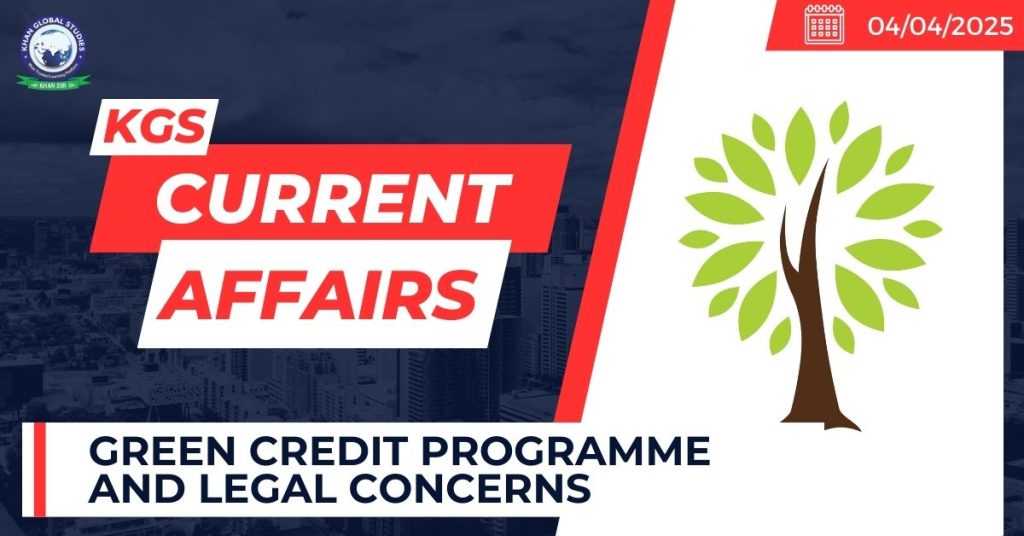Context:
The Union Ministry of Law and Justice raised concerns about the legality of the Green Credit Scheme which was rolled out by Environment Ministry in 2023.
Legal Concerns Raised
Initial Concerns by the Law Ministry: A week before the environment ministry notified the Green Credit Rules on October 12, 2023, the legislative department under the Ministry of Law and Justice cautioned that the provisions of the Environment (Protection) Act, 1986
- It stated that the EPA might not support the business model or activity framed under the Green Credit Program.
They advised the Environment Ministry to consult the Department of Legal Affairs on the legality of the proposed rules.
- The Department of Legal Affairs is responsible for advising ministries on legal matters, while the Legislative Department drafts laws for various ministries.
Despite these concerns, the Environment Ministry proceeded to notify the Green Credit Rules without further legal review.
Environment Ministry’s Justification
The Environment Ministry argued that the EPA of 1986 allows the central government to plan and execute nationwide programs for the prevention, control, and abatement of environmental pollution.
- The Ministry believed that the Green Credit Programme falls within this mandate, even though it involves a market-based mechanism for trading credits.
The Ministry drew a parallel with the Energy Conservation Act, which was amended in 2023 to enable the creation of a carbon credit trading scheme after the Law Ministry made similar observations on the market-linked mechanism.
About the Green Credit Programme
The Green Credit Rules were notified by the Government of India on 12th October 2023 under the Environment Protection Act, 1986.
- Under the programme, individuals, communities and private industries that engage in environment-positive actions get tradable ‘green credits’.
- Such actions could include increasing forest cover, water management, and sustainable agriculture.
- These credits can then be traded on a domestic platform to meet legal obligations such as compensatory afforestation for industrial or infrastructure projects.
The GCP was officially launched on December 1, 2023, by Prime Minister Narendra Modi and Sheikh Mohammed bin Zayed Al Nahyan, President of the UAE, at the annual United Nations COP28 in Dubai.
It aimed to incentivize “pro-planet” actions in response to climate change, contributing to the government’s Mission LiFE (Lifestyle for Sustainable Environment).

It hoped to create a market for green credits at an international level, just like the one on carbon credits exists.
Progress: As of March 2024, a total of 2,364 land parcels, spanning 54,669.46 hectares, were registered across 17 states. 384 entities have registered for participation, including 41 public sector undertakings.
Objectives of the Green Credit Programme (GCP):
- It aims to establish a dynamic land bank for plantations accessible via a dedicated web portal. This facility enables the registration of degraded forest lands by Forest departments.
- To encourage industries, companies, and other entities to meet their existing legal obligations or other obligations under applicable laws, while also promoting voluntary environmental measures by generating or purchasing green credits.
- Issuance of Green Credits that would serve as a key incentive for entities engaging in tree plantation.
- Digitally processes operations through technology-based tools like a web platform and a registry for seamless registration, verification, and monitoring of plantation-related activities.

